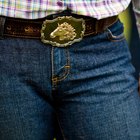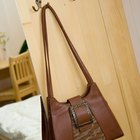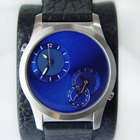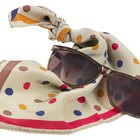
Cameos are miniature works of art featuring a portrait or scene carved in relief from a single piece of material. Collectors can find cameos made of agate, jade, sardonyx, chalcedony, glass paste, jasperware, shell and coral. Jewelers typically set cameos into gold, silver or another metal to make a decorative brooch or pendant. A "fake" cameo, however, may consist of two separate layers of material joined to achieve a three-dimensional effect or one made from a material other than what it is purported to be.
Details, Details
Judge the quality of a cameo by its carved image. A clear, crisp image with finely cut details indicates high quality. A cameo featuring the bust of a woman in profile, for example, will show individual strands of hair, a raised cheek area, and distinct but natural curves around the mouth and nose. The folds of her garment will be clearly delineated. Added details such as flowers or jewelry are another indication of quality. Artists of exceptional skill create cameos depicting scenes with multiple figures, all carved with the same intricate detail. A poor quality cameo or one that is molded rather than carved, however, may display a simple, unengaging image. The subject may lack detail and appear blurry.
True Colors
Gauge the value and authenticity of a genuine cameo by taking a close look at its color. In a carnelian shell cameo, look for a cream or white image on a reddish-brown, peach or orange background. If a cameo is purported to be made of more expensive sardonyx shell, you should see a white image on a dark brown or grayish-brown background. In the mid-1700s, English potter Josiah Wedgwood began using a material called jasperware to make cameos featuring a white image on a matte-finish colored background. You can find jasperware cameos with background colors of grayish-blue, also known as “Wedgwood blue;" sage green; lilac; dark blue; yellow; and black. Cameos described as jasperware in colors other than these may be actually resin or plastic.
A Real Feel
Plastics and resins are used alone or layered in combination with genuine materials to create fake shell cameos. Cameo collectors can often feel the difference in temperature between resin, glass and plastic cameos, which quickly warm to body temperature, and cameos made of shell or hard stone, which are cooler to the touch and do not warm up quickly when held. Feel the back of a cameo purported to be made of shell. A genuine shell cameo will have a curved back revealing the shape of the shell from which it was made.
Looks are Everything
The style and setting of a cameo are clues to its age and quality. A cameo featuring a woman in profile with an upturned nose, for instance, indicates that the image is newer. Older cameos feature women with more classical features. Older cameos also feature the images of gods and goddesses or famous people. Fake cameos made of plastic, resin or glass are shinier and look newer. A fake cameo will rarely be set in a valuable metal such as 14K gold or sterling silver. Fake cameos are usually set in base metals, and these settings make the cameo heavier.
Do Your Homework
Take the time to research cameos and handle several kinds before buying one to reduce your risk of ending up with a fake cameo. Buy a cameo from a reputable dealer and, if the cameo is described as an antique, ask questions about its provenance or history. Examine the cameo with a jeweler’s loupe or magnifying glass to search for flaws and check the setting for markings, such as those specifying 14K gold or sterling silver.
Related Articles

How to Tell a Real Tiffany's Necklace ...

How to Spot Fake Oakley Gascans

How to Spot a Fake BB Simon

How to Tell if Your Hermes Belt Buckle ...

Tanzanite Vs. Diamonds

How to Tell If It's Gold Filled or ...

How to Identify a Fake Breitling Watch

Differences Between Santos De Cartier ...

About Old World, French Country, and ...

How to Tell If a Ladies Rolex Is Real

How to Identify a Vintage Belt Buckle

How to Spot Counterfeit Tommy Hilfiger

How to Spot Kathy Van Zeeland Fakes

How to Collect and Sell Turquoise ...

How to Spot a Fake Lacoste Polo

How to Identify Vintage Purses

How to Tell if a Rado Is Fake

Things to Look for on a Fake Coach Silk ...

Mother of Pearl Vs. Shell Buttons

How to Identify a Knockoff LeCoultre ...
References
Resources
Writer Bio
Laura Leddy Turner began her writing career in 1976. She has worked in the newspaper industry as an illustrator, columnist, staff writer and copy editor, including with Gannett and the Asbury Park Press. Turner holds a B.A. in literature and English from Ramapo College of New Jersey, with postgraduate coursework in business law.
Photo Credits
Photos.com/Photos.com/Getty Images